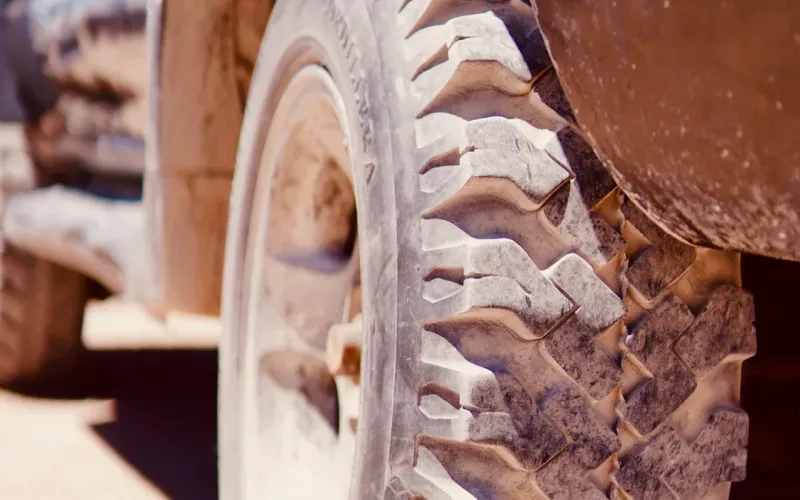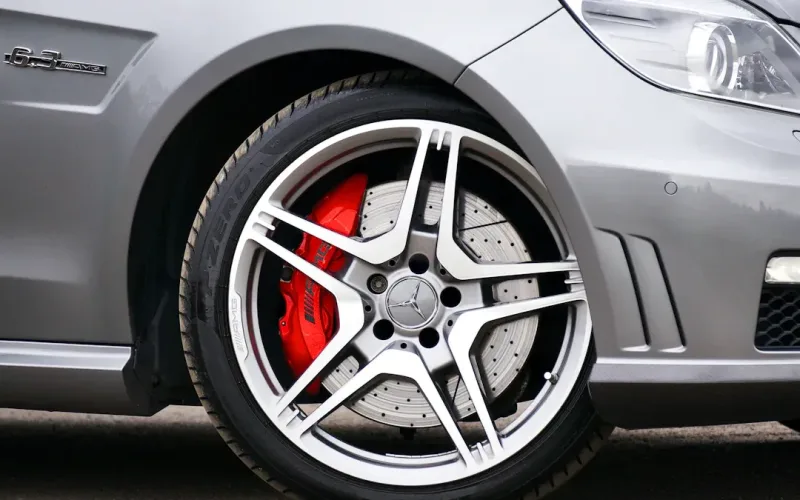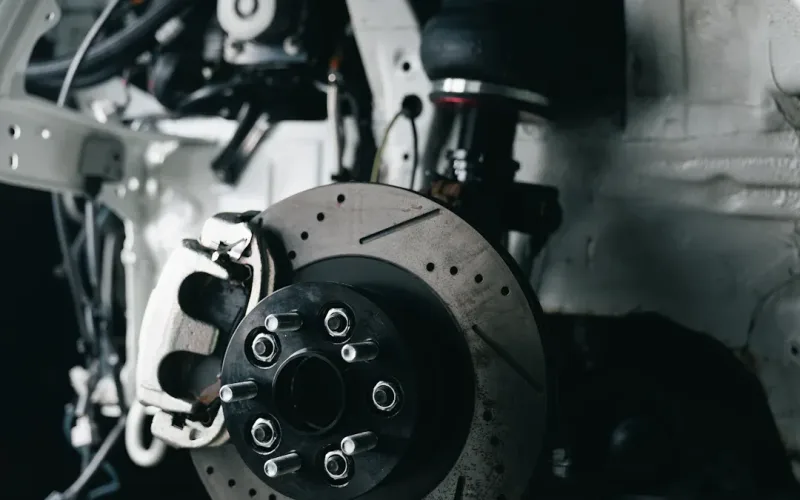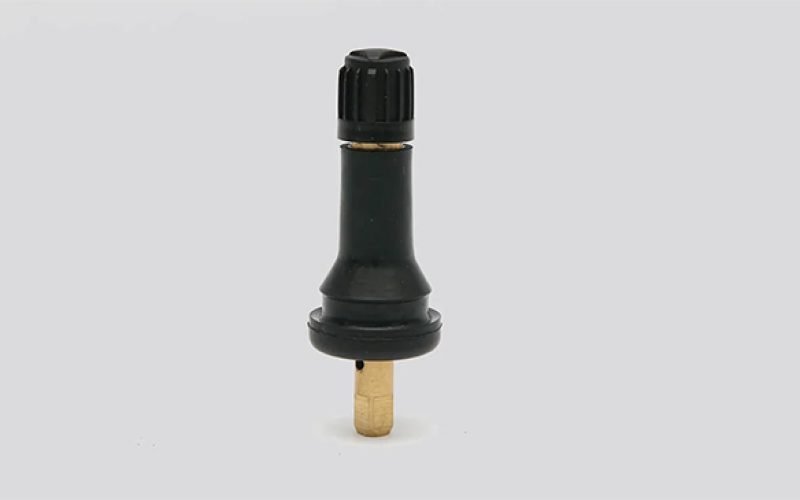

admin1
June 30, 2025
How to Select the Best Tire Balancing Weight for Your Car
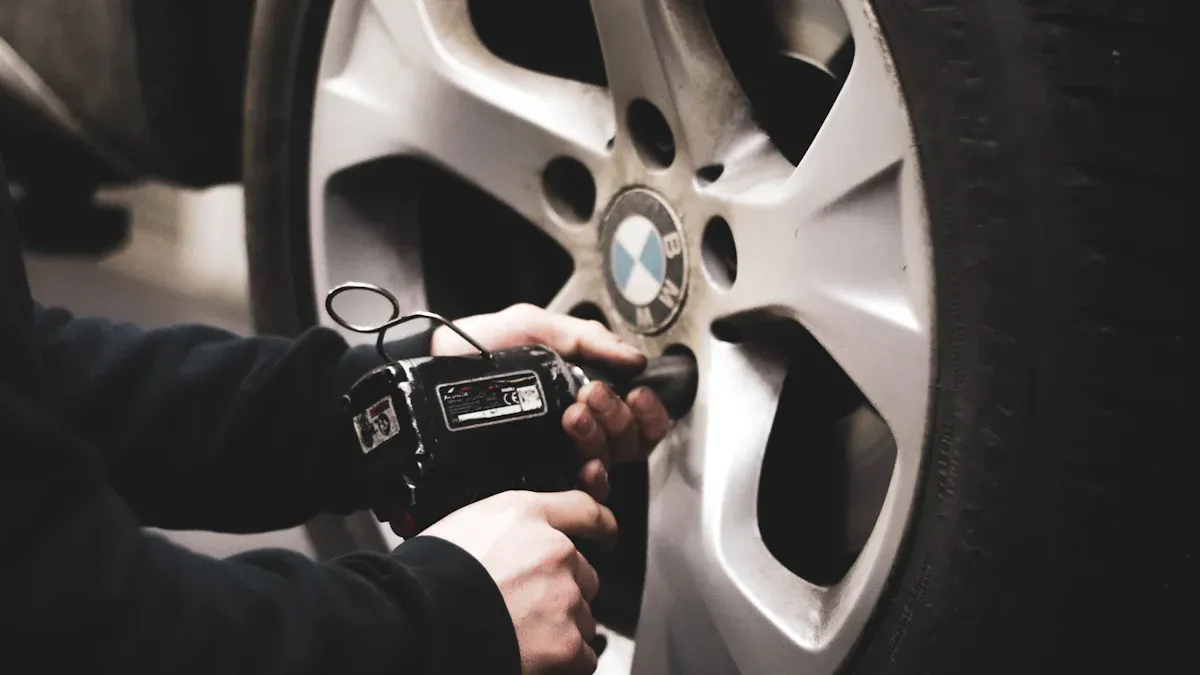
You want your vehicle to perform safely and smoothly every day. The right wheel balancing weight plays a big role in this. Even a small tire imbalance, such as one ounce, can cause your steering wheel to vibrate at highway speeds. This makes driving less comfortable and can shorten tire life. Many factors affect your choice of tire balancing weight, including your wheel type, driving habits, and vehicle setup.
- Vehicle weight distribution, like 60/40 or 50/50, changes how your tires handle stress.
- City driving increases lane changes and puts more force on your wheels than highway driving.
By choosing the correct wheel balancing weight, you improve wheel balance, increase vehicle safety, and enjoy the benefits of using the correct wheel balancing weight. Fortune provides high-quality, certified products to help you keep your wheels in top condition.
Understanding Tire Balancing Weight Types for Your Vehicle
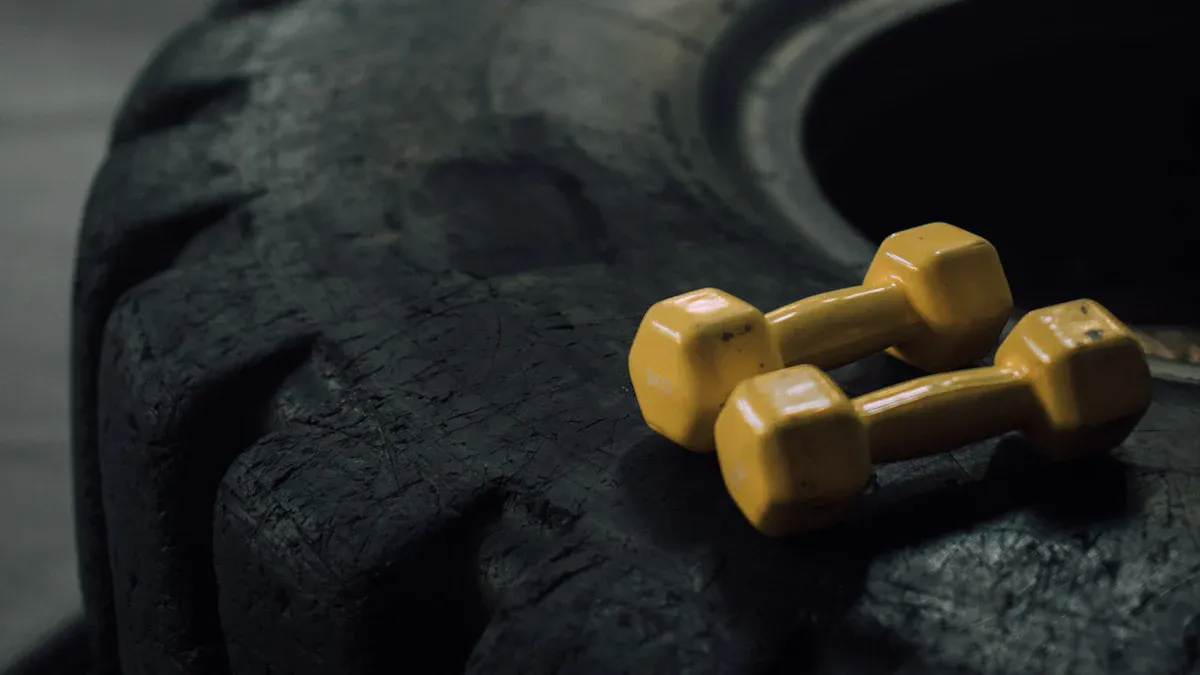
When you want to keep your vehicle running smoothly, you need to know about the different types of wheel balancing weights. The right tire balancing weight helps your tire and wheel assembly stay balanced, which improves safety and comfort. You can choose from several types of wheel weights, each with unique features for your vehicle.
Clip-On Wheel Balancing Weight
Clip-on wheel balancing weights attach directly to the rim of your wheel. You often see these on steel wheels, but some work with alloy wheels too. These weights clamp onto the edge of the wheel, making installation quick. You do not need to worry about damaging the wheel finish because most clip-on weights come in different sizes and shapes to fit your wheel perfectly.
- Clip-on weights are strong and durable.
- They work well for heavy-duty vehicles and rough road conditions.
- You can remove and replace them easily during tire service.
Clip-on wheel weights remain popular in many regions, especially in Asia Pacific, due to their cost and traditional use. They often use materials like lead, steel, or zinc. Lead is dense and allows for smaller weights, but many places now prefer steel or zinc for environmental reasons.
Adhesive Tire Balancing Weight
Adhesive tire balancing weights use a strong sticky backing to attach to the inside of your wheel. These wheel weights are perfect for aluminum alloy or custom wheels, where you want a clean look. You can find them in standard and low-profile designs, which blend in with modern wheels.
| Metric | Adhesive Weights | Clip-on (Traditional) Weights |
|---|---|---|
| Weight Savings | 50-70% reduction in unnecessary weight | Standard weight (no reduction) |
| Installation Ease | Easy installation with adhesive | Requires tools and more time |
| Aesthetic Appeal | Sleek design, blends with modern wheels | Bulky and visible |
| Environmental Compliance | Free from harmful substances like lead | Often contains hazardous materials |
| Bond Strength | Superior bond strength with advancements | Varies, often less durable |
Adhesive wheel balancing weights are gaining popularity in North America and Europe. Many drivers choose them for their sleek appearance and eco-friendly materials. These weights help reduce unnecessary weight on your wheel, which can improve your vehicle’s performance.
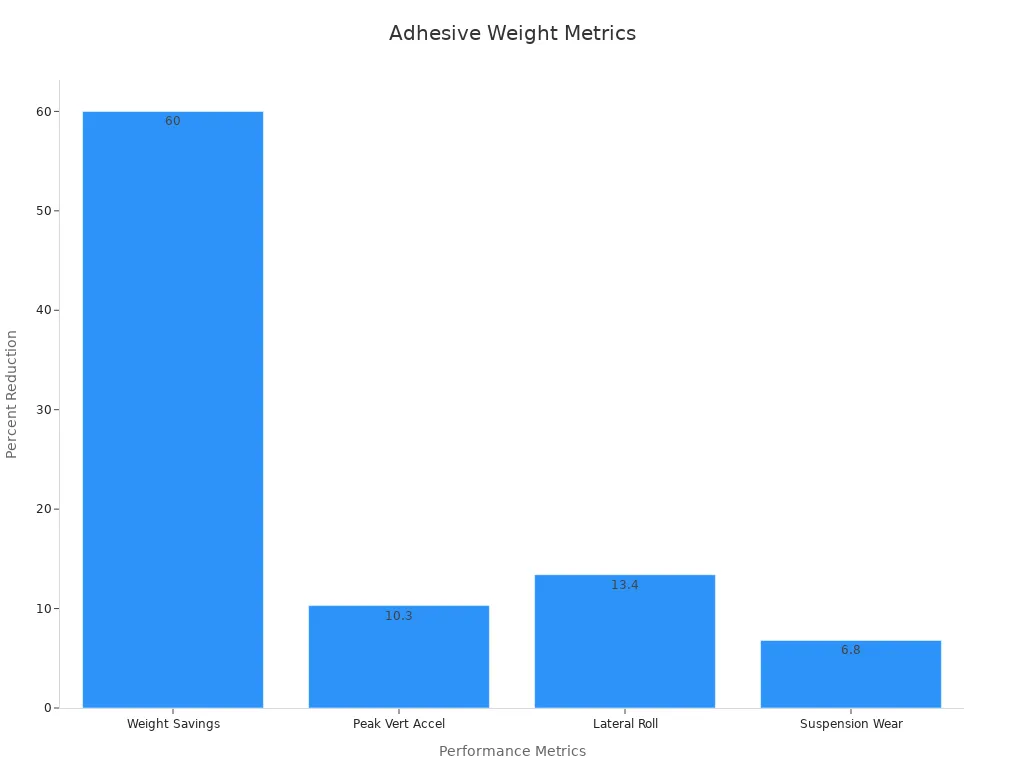
Tip: Using the right types of wheel balancing weights can lower peak vertical acceleration by 10.3%, reduce lateral body roll by 13.4%, and decrease suspension wear by 6.8%. This means your vehicle will handle better and your tires will last longer.
Both clip-on and adhesive wheel balancing weights play a key role in balancing your tire and wheel assembly. By understanding these options, you can choose the best tire balancing weight for your vehicle and driving needs.
Choosing the Right Wheel Weight Based on Wheel Type
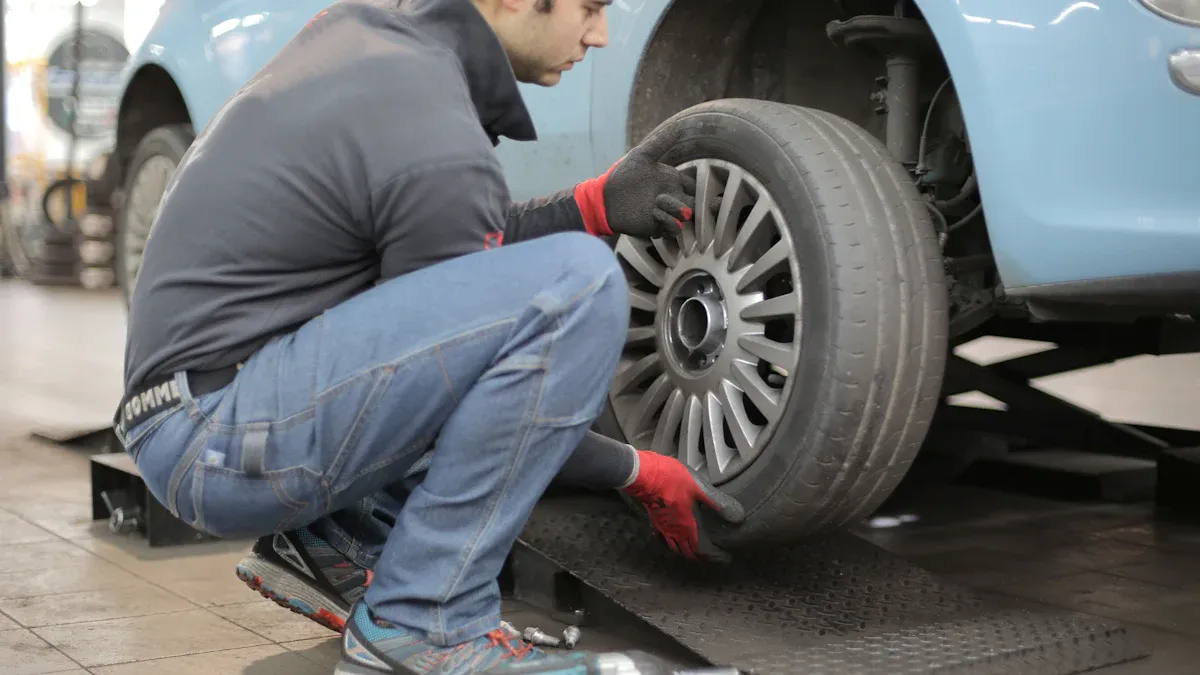
Steel Wheels and Proper Wheel Balance
When you drive a vehicle with steel wheels, you need to focus on durability and strength. Steel wheels are common on many cars, trucks, and commercial vehicles. They handle rough roads and heavy loads well. To keep your ride smooth, you must use the right wheel balancing weight for steel wheels.
Clip-on wheel weights work best for steel wheels. These weights attach firmly to the rim and stay in place even when you drive over bumps or potholes. You can rely on them to correct both static and dynamic imbalances. Static imbalance causes your tire to shake up and down, while dynamic imbalance makes it move side to side. By placing the correct wheel weights, you stop these problems and keep your tire and wheel assembly balanced.
Note: According to the Technology & Maintenance Council, regular balancing with clip-on weights improves ride comfort, reduces uneven tire wear, and extends the life of your tires and wheel components.
You should always check for unbalanced wheels. If you feel vibrations or hear strange noises, your wheel balance may be off. Missing or loose wheel weights can lead to early tire removal and higher maintenance costs. When you choose the best wheel balancing weight for steel wheels, you protect your vehicle and save money in the long run.
Here are some key points about balancing steel wheels:
- Clip-on wheel weights are strong and reliable for steel wheels.
- Proper wheel balance prevents vibrations and keeps your ride comfortable.
- Steel or zinc weights are now popular because they are safer for the environment than lead.
- Regular balancing helps you avoid costly repairs and keeps your vehicle running smoothly.
Alloy and Custom Wheels: Selecting the Best Tire Balancing Weight
Alloy and custom wheels give your vehicle a stylish look and often improve performance. These wheels are lighter than steel wheels and come in many shapes and finishes. When you choose the right wheel weight for alloy or custom wheels, you must think about both function and appearance.
Adhesive (stick-on) wheel balancing weights are the top choice for alloy and custom wheels. These weights attach to the inside of the wheel, so they do not scratch or damage the outer finish. You keep your wheels looking new and clean. Stick-on weights also fit well on wheels with unique designs or limited space, where clip-on weights may not work.
You can install adhesive wheel weights easily without special tools. Many drivers like this option for do-it-yourself balancing. These weights are lighter than clip-on types, which helps high-performance vehicles by reducing overall wheel weight. Lighter wheels improve handling and fuel efficiency.
A table can help you compare the benefits:
| Feature | Adhesive Weights (Alloy/Custom) | Clip-on Weights (Steel) |
|---|---|---|
| Installation | Easy, no tools needed | Requires tools |
| Wheel Protection | No scratches or damage | May scratch rim |
| Appearance | Hidden, keeps wheels clean | Visible on rim |
| Weight | Lighter, better for performance | Heavier, more durable |
| Best Use | Alloy, custom, luxury, sports | Steel, commercial |
You gain more than just looks with adhesive wheel weights. Advanced adhesives increase bond strength, so the weights stay in place even in heat or humidity. These weights resist corrosion and help extend tire life by up to 50%. You also improve fuel efficiency by up to 10% over time. Many luxury and sports car owners prefer adhesive weights to keep their wheels balanced and looking great.
Tip: Stick-on wheel weights are perfect for high-performance vehicles. They keep your wheels balanced, improve handling, and help your tires last longer.
When choosing the right wheel weight for your vehicle, always match the type of wheel with the best balancing weight. This ensures proper wheel balance, better performance, and a longer life for your tires and wheels.
Selecting Tire Balancing Weight Material for Safety and Eco-Friendliness
Choosing the right material for your tire balancing weight is important for your vehicle’s safety, stability, and the environment. You want to make sure your wheel weights last long, protect your wheels, and help keep your vehicle safe on the road. Let’s look at the main options and see how they affect your tire, wheel, and the world around you.
Lead vs. Lead-Free Wheel Balancing Weight
You may have seen lead wheel weights in the past. Lead was once the most common material for balancing tires because it is heavy and easy to shape. However, lead can harm the environment and pose health risks. Many countries now ban or limit the use of lead in wheel weights. If you want enhanced safety and stability, you should avoid lead and choose lead-free options.
Lead-free wheel weights use materials like steel or zinc. These materials do not pollute the soil or water. They also help you meet new rules for vehicle safety and eco-friendliness. When you use lead-free weights, you protect your family, your community, and your vehicle. You also help keep your tires and wheels in good condition for a longer time.
Tip: Always check if your wheel weights are labeled as lead-free. This small step supports eco-friendly alternatives and keeps your vehicle safe.
Steel and Zinc Tire Balancing Weight Options
Steel and zinc are the top choices for modern tire balancing weights. Both materials offer strong performance, but each has unique benefits. You should pick the one that matches your driving needs and local conditions.
Here is a table to help you compare steel and zinc wheel weights:
| Attribute | Steel Tire Balancing Weights | Zinc Tire Balancing Weights |
|---|---|---|
| Durability | High durability and strength; withstands harsh conditions and heavy loads; lasts very long especially with coatings | Good durability; excellent corrosion resistance due to protective oxide layer; lasts long in wet, salty, or coastal environments |
| Corrosion Resistance | Moderate; requires anti-rust coatings to resist corrosion | Excellent; naturally forms protective oxide layer, superior in acidic or saline conditions |
| Safety | Safer alternative to lead; robust and strong | Safer alternative to lead; superior corrosion resistance reduces degradation risks |
| Environmental Impact | Low toxicity; highly recyclable; minimal environmental harm | Moderate toxicity; recyclable but can pose aquatic risks if not recycled properly |
| Cost | Lower initial cost; cost-effective over time due to durability and low maintenance | Higher initial cost due to complex casting and manufacturing; long-term value in corrosive environments |
| Ideal Use Cases | Heavy-duty vehicles, off-road, budget-conscious users | Vehicles operating in wet, salty, or coastal areas requiring corrosion resistance |
Steel wheel weights give you high strength and last a long time. They work well for heavy vehicles and rough roads. You get good value because steel is cost-effective and easy to recycle. Zinc wheel weights resist rust better, especially in wet or salty places. If you drive near the ocean or in areas with lots of rain, zinc may be the best choice for your tire and wheel.
Both steel and zinc pass strict tests for durability and safety. You can trust them to keep your tires balanced and your vehicle stable. Steel weights are heavier, which can affect fuel use a little, but they offer strong protection for your wheels. Zinc costs more, but it gives you better performance in tough weather.
Eco-Friendly Choices for Your Vehicle
You help the planet when you pick eco-friendly wheel weights for your vehicle. The market now moves away from lead and toward safer, greener materials. As of December 2024, almost all new vehicles in the U.S. use lead-free wheel weights. Steel now makes up about 46% of the market, showing a big change in what drivers and automakers choose.
The global tire balance weight market keeps growing. Experts expect it to reach even higher values in the next decade. New rules in North America and Europe push for more eco-friendly alternatives. Car makers now use polymer-coated steel and special adhesive wheel weights for electric and luxury vehicles. These changes help you get better safety, stability, and eco-friendliness.
Note: By choosing eco-friendly wheel weights, you support cleaner air and water. You also help your tires last longer and keep your vehicle running smoothly.
You can make a difference with your choice. Pick steel or zinc wheel weights for your tire and wheel. You get enhanced safety and stability, protect your vehicle, and help the environment. Your decision matters for your family, your community, and the world.
Matching Tire Balancing Weight to Driving Habits and Conditions
Daily Commuting and Proper Wheel Balance
You drive your vehicle every day to work, school, or the store. For daily commuting, you want your wheel and tire to stay balanced for a smooth ride. When you use the right wheel balancing weight, you reduce vibrations and keep your vehicle safe. Most city drivers face stop-and-go traffic, frequent turns, and sudden stops. These actions put stress on your wheel and tire assembly.
If you drive mostly in the city, choose adhesive wheel balancing weights for your alloy wheels. These weights help your tire and wheel stay balanced, even with frequent braking. Clip-on wheel balancing weights work well for steel wheels. Both types keep your vehicle stable and improve performance. You will notice less steering wheel shake and longer tire life.
Tip: Check your wheel balancing every 6,000 miles or at every tire rotation. This keeps your vehicle running smoothly and prevents uneven tire wear.
Highway, Off-Road, and Performance Vehicle Needs
When you drive on highways, your vehicle moves at higher speeds. Any small imbalance in your wheel or tire can cause big problems. You may feel vibrations or hear noise. For highway driving, use high-quality wheel balancing weights. Steel or zinc balancing weights give you the best results for long trips.
If you take your vehicle off-road, your wheel and tire face rocks, mud, and bumps. Heavy-duty clip-on wheel balancing weights work best for steel wheels in these conditions. They stay in place and keep your wheel balanced, even on rough ground.
For high-performance vehicles, you need precise wheel balancing. Adhesive balancing weights are perfect for sports cars and luxury vehicles. These weights are lighter and help you achieve improved vehicle performance. You get better handling, faster response, and a safer ride.
| Driving Condition | Best Wheel Balancing Weight Type | Key Benefit |
|---|---|---|
| Daily Commuting | Adhesive (alloy), Clip-on (steel) | Smooth ride, less vibration |
| Highway | Steel/Zinc, Clip-on | Stability at high speeds |
| Off-Road | Heavy-duty Clip-on | Durability, stays in place |
| High-Performance | Adhesive, Low-profile | Precision, improved performance |
Choose the right wheel balancing weight for your driving habits. You will protect your tire, wheel, and vehicle. You will also enjoy better performance and safety every day.
Installation, Maintenance, and Professional Advice for Proper Wheel Balance
DIY vs. Professional Installation of Wheel Balancing Weight
You might think about doing the installation process yourself to save money. DIY balancing kits are available, but they often lack the precision of professional tools. When you use a professional service, certified technicians use specialized equipment to measure imbalances and apply counterweights. This ensures your tires rotate smoothly and your ride stays comfortable.
- Professional balancing prevents vibrations and uneven tire wear.
- Balanced tires last longer and improve fuel efficiency, saving you money over time.
- Technicians provide warranty coverage and follow environmental guidelines by using eco-friendly weights.
- You also get extra services like alignment checks and safe tire disposal.
While DIY methods may seem cheaper at first, professional balancing offers better value. You gain safety, precision, and long-term savings. Case studies show that professional installation reduces maintenance costs and accident risks. You also benefit from improved vehicle handling and stability.
Tip: Always clean and dry the wheel surface before applying adhesive weights. Warm the adhesive in cold weather to improve stickiness. Use the right tools for clip-on weights to avoid rim damage.
Regular Checks and Maintenance for Your Vehicle
Keeping your wheels balanced means following a regular maintenance schedule. You should check your tires and wheels often to catch problems early. Routine balancing during maintenance improves ride comfort, reduces irregular tread wear, and extends the life of your tires and suspension.
Here is a simple table to help you remember when to check your wheels:
| Inspection Interval | Tire and Wheel Related Tasks |
|---|---|
| Daily/Pre-Trip | Check tire tread, pressure, general safety |
| Monthly | Check wheel alignment, steering, minor repairs |
| Half-Yearly | Perform wheel balancing, engine tune-ups, replace worn tires |
You should balance all tires, not just the front ones. Check your wheel balancing process every 5,000 to 6,000 miles or when you feel vibrations. Proper balancing can improve fuel efficiency by up to 4% and reduce wear on steering assemblies. Following these steps keeps your vehicle safe and your ride smooth.
Note: Industry standards like TMC Recommended Practice (RP) 214 support these maintenance routines. Regular balancing and inspections help you avoid costly repairs and keep your vehicle performing at its best.
You make every drive safer and smoother by choosing the right balancing weight for your wheels. Balancing keeps your tires in top shape, improves fuel economy, and protects the environment. Studies show that balancing can increase tire life by up to 50%, reduce tire heat by 10%, and improve ride comfort. You help your vehicle handle better and last longer with proper balancing. Fortune’s certified balancing weights give you reliable balancing for every trip. Use this checklist to guide your balancing decisions:
- Identify your wheel type for correct balancing.
- Match the balancing weight type—clip-on or adhesive.
- Choose a balancing material, with lead-free balancing preferred.
- Think about your driving habits for the best balancing.
- Balance cost and durability for long-term balancing results.
- Get professional balancing help for installation and checks.
| Benefit Category | Improvement Range / Description |
|---|---|
| Fuel Economy | 1% to 2.2% improvement with balancing |
| Tire Life | 25% to 50% increase from regular balancing |
| Tire Heat Reduction | 8% to 10% decrease due to balancing |
| Ride Comfort | Balancing eliminates vibrations for a smoother ride |
| Environmental Impact | Balancing with eco-friendly materials reduces pollution |
| Vehicle Stability | Balancing improves traction and handling |
Remember, regular balancing protects your tires, boosts performance, and supports a cleaner world.
FAQ
What happens if you do not balance your tires?
You may feel vibrations in your steering wheel or seat. Unbalanced tires cause uneven tread wear. This can shorten tire life by up to 50%. You also risk damaging your suspension and reducing your vehicle’s fuel efficiency.
How do you know which wheel balancing weight to use?
Check your wheel type first. Use clip-on weights for steel wheels. Choose adhesive weights for alloy or custom wheels. Always select lead-free materials for safety and environmental reasons.
How often should you check your wheel balance?
You should check your wheel balance every 5,000 to 6,000 miles. Also, check after hitting a pothole or curb. Regular checks help prevent uneven tire wear and improve ride comfort.
Can you reuse wheel balancing weights?
You should not reuse wheel balancing weights. Old weights may lose grip or become damaged. Always use new, certified weights for the best safety and performance.
Are lead-free wheel weights better for the environment?
| Material | Environmental Impact |
|---|---|
| Lead | Harmful, pollutes soil/water |
| Steel/Zinc | Safer, recyclable |
Lead-free weights protect the environment. You help reduce pollution and support recycling when you choose steel or zinc weights.
